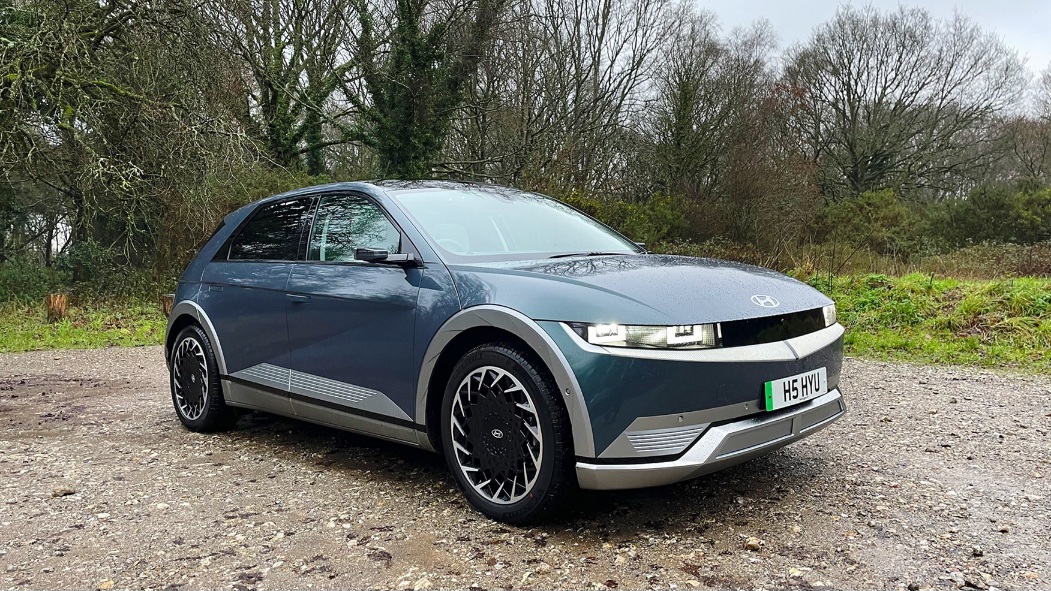Electric vehicles still require maintenance, even though they don’t need regular service appointments as frequently as their gas-powered counterparts.
One of the major selling points of EVs is their low maintenance costs and reduced need for frequent upkeep, but that doesn’t mean you can avoid spending money to take care of your vehicle altogether.
EVs With Low Maintenance Costs
So, which electric vehicles have the lowest maintenance costs?The answers might surprise you especially when you discover how affordable it is to maintain Tesla vehicles.
Tesla Model S
Average Annual Maintenance Costs: $457 Per Year
The Tesla Model S continues to serve as the flagship electric sedan for the brand.
It was the first electric vehicle to successfully deliver both the long driving range and high performance that drivers desire.
One of its standout features is the impressively low average annual maintenance cost, which makes it more affordable to own and operate compared to most gas-powered vehicles.
The most popular version of this sedan is the Plaid model, which is known for its lightning-fast acceleration and powerful performance.
It comes equipped with a 100 kWh battery, delivers 1,020 horsepower and 1,050 lb-ft of torque, and features all-wheel drive.
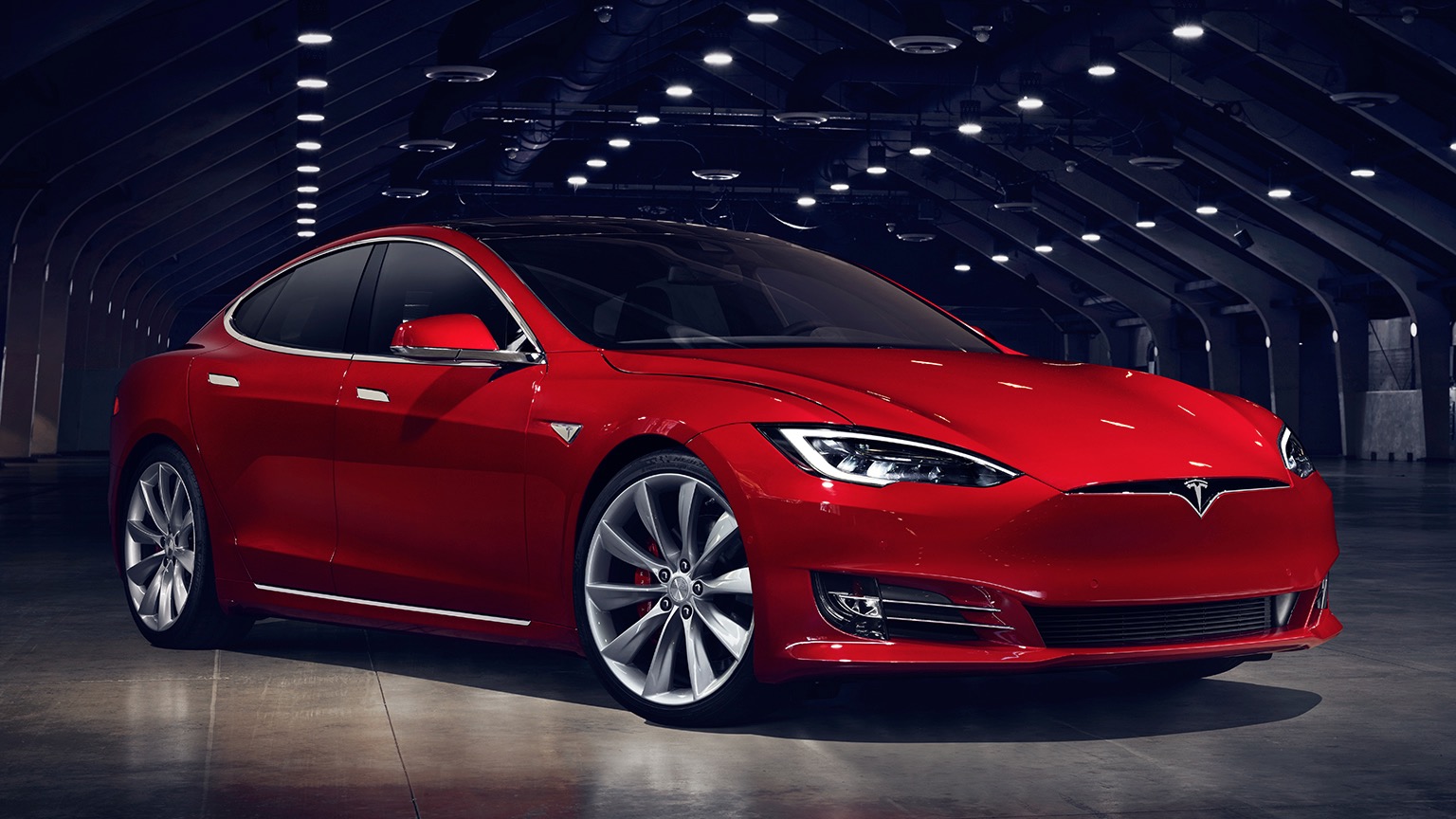
The Model S Plaid offers a driving range of 359 miles, accelerates from 0 to 60 mph in just 2.1 seconds, and has a top speed of 162 mph (governor limited).
The sleek and aerodynamic exterior design contributes to the vehicle’s efficiency and appeal.
There are several advantages to owning the Tesla Model S. It boasts an impressive electric range, delivers rapid acceleration across all trims, and offers generous cargo space thanks to its liftback design. However, it also has some drawbacks.
The interior doesn’t feel as refined as those in similarly priced EVs, it lacks Apple CarPlay and Android Auto smartphone integration, and Tesla provides only a limited selection of paint colors and personalization options from the factory.
Tesla Model 3
Average Annual Maintenance Costs: $359 Per Year
The Tesla Model 3 is the entry-level vehicle in the Tesla lineup, offering drivers the most affordable way to experience the brand’s advanced technology and innovative features.
As the smallest car in Tesla’s portfolio with the lowest starting price, the Model 3 provides an excellent opportunity for buyers who want the benefits of a Tesla without spending a premium.
Despite its affordability, it doesn’t compromise on performance or range.The most popular version of the Model 3 comes with a 79.7 kWh battery, delivering 286 horsepower and 322 lb-ft of torque.
It features a rear-wheel-drive system and offers an impressive driving range of 363 miles. The car can accelerate from 0 to 60 mph in 4.6 seconds and reaches a top speed of 126 mph (governor limited).
The latest Highland version of the Model 3 brings several important updates, addressing past criticisms and improving the overall experience.
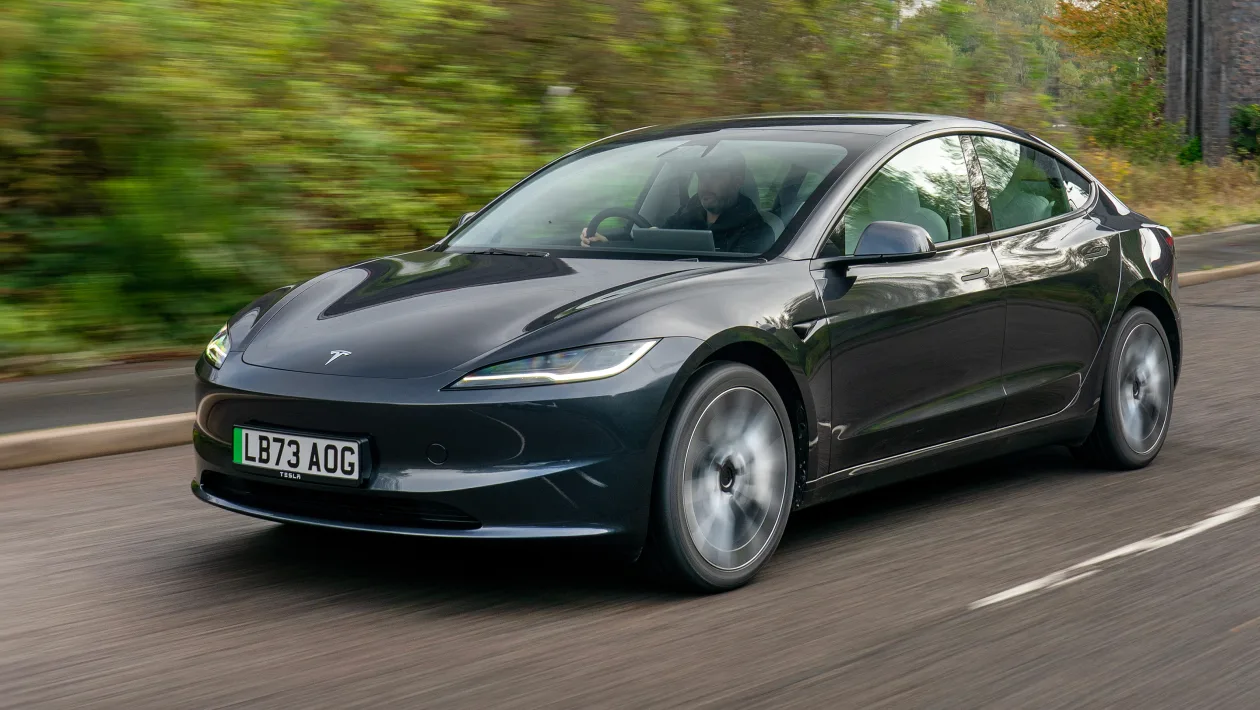
This small Tesla sedan has become a trusted choice among drivers who want a cost-effective electric vehicle, particularly in the Long Range model.
The Model 3 offers many advantages, including outstanding range, strong performance, and agile handling. It also provides comfortable seating and generous space for both passengers and cargo.
A key benefit of owning a Model 3 is access to Tesla’s Supercharger network, which enhances its convenience for long-distance travel.
However, the car is not without its downsides. Nearly all functions are controlled through the touchscreen interface, which can be distracting to operate while driving.
Additionally, it lacks Android Auto and Apple CarPlay smartphone integration, and the Autopilot system remains somewhat misleading, as it is not yet a fully autonomous driving solution.
Kia EV6
Average Annual Maintenance Costs: $343 Per Year
The Kia EV6 represents a perfect blend of practicality and driving excitement in the form of an electric crossover.
For those looking to elevate their experience, stepping up to the GT trim offers an electrifying level of performance, while still delivering the practicality and convenience that families need for everyday driving.
It strikes a balance between power and usability that appeals to a wide range of drivers.
The most popular version of the EV6 features a 77.4 kWh battery, generating an impressive 576 horsepower and 545 lb-ft of torque.
It comes with all-wheel drive, a driving range of 206 miles, and accelerates from 0 to 60 mph in just 3.2 seconds.
With a top speed of 161 mph, the EV6 GT adds thrilling performance to its family-friendly design.Though it wasn’t Kia’s first foray into electric vehicles, the EV6 has quickly gained popularity in the EV market.

One of its standout attributes is its remarkably low average annual maintenance cost, which makes owning and enjoying this electric SUV more affordable.
There are many reasons why drivers are drawn to the Kia EV6. It offers quick acceleration and sporty handling, making it fun to drive.
The cabin provides ample space for both front and rear passengers, and the vehicle supports the latest high-rate charging stations, enhancing its practicality for daily use and long trips.
However, there are a few drawbacks. The EV6 does not offer as much maximum cargo space as some other electric SUVs, and visibility from the front and rear could be improved.
Additionally, some of the driver assistance features could operate more smoothly, which might impact the overall driving experience for some users.
The Kia EV6 is an electric car that its maker claims can charge faster than a Tesla, go further than a Hyundai Ioniq 5 and, if you choose the right version, even out-accelerate a Porsche Taycan 4S. Those claims should be taken seriously because Kia has a good reputation when it comes to building electric cars.
You see, the brand’s first EV, the Kia e-Niro, became the first electric car to win our overall Car of the Year award. Then, in 2022, the EV6 itself went on to win the same accolade.
Since then, the EV6 has undergone a facelift and has, on paper, become even better. That’s because on top of some styling tweaks, it’s been fitted with an even bigger battery for a longer range, plus it has different battery chemistry for faster charging.
In cheaper RWD form, the Kia EV6 has one 225bhp motor that drives the rear wheels, giving performance that’s decent rather than, er, electric. We managed to get from 0-60mph in 7.1 seconds in our tests – slower than an equivalent Cupra Tavascan or Ford Capri but still quick enough in everyday driving. A more gradual power delivery means it simply lacks the initial urgency those two rivals have when setting off from stationary.
When it comes to range, we managed to achieve a real-world figure of 272 miles (with an efficiency figure of 3.4 miles/kWh) in winter. That’s about the same as a Tavascan RWD and around 20 miles less than a Capri Extended Range tested on the same day. We’d expect you to achieve closer to 300 miles in the warmer summer months from its 80kWh (estimated usable capacity) battery.
The pricier four-wheel-drive dual-motor (AWD) EV6 has a second electric motor powering the front wheels, increasing power to 320bhp in total and dropping the 0-62mph time down to 5.3 seconds, giving acceleration that’s more of a match for the Hyundai Ioniq 5 AWD and slightly behind the Tesla Model Y Long Range AWD. The extra motor does reduce the AWD’s official range compared to the RWD, but at 339 miles (or 324 miles for GT-Line S models with the bigger alloys) it’s still very competitive against rivals – if not quite as far as the 373-mile Model Y.
Kia has intentionally sacrificed some cushioning over bumps to create a car that’s a bit more agile and fun to drive. The EV6’s ride is far from bone-shakingly firm though – in fact, some will prefer the more controlled, less floaty sensation to what you feel in the Ioniq 5. There are more comfortable electric SUVs out there for those with deeper pockets (a Genesis GV60 for example), while the cheaper Skoda Enyaq offers a slightly more agreeable ride. However, the EV6 is far more comfortable than the rather fractious Model Y and much more settled than a Capri or a Nissan Ariya.
The EV6 isn’t the sort of car you’ll leap out of bed on a Sunday morning to go for a drive in, but the same goes for most electric cars (the Hyundai Ioniq 5 N and Porsche Taycan are exceptions). That doesn’t mean the EV6 handles badly though – far from it. It grips well through corners, especially with the four-wheel-drive versions, and being slightly lower than most SUVs means it leans less than many rivals, including the Ioniq 5, the Ariya and the VW ID 4. In an ideal world we’d like a better sense of connection with the front wheels from the steering, but it’s accurate enough to let you position the car with confidence.
As an electric car the EV6 has an obvious advantage over petrol and diesel alternatives because there’s no engine chugging away under the bonnet. The EV6’s brake-pedal response is better than many rivals at blending traditional and regenerative braking, with a sharp and linear response. Not only does it make driving in stop-start traffic less frustrating, but it helps build up confidence when driving down a country road.
True, the 20in wheels that come with top-of-the-range GT-Line S trim produce a noticeable amount of road noise, especially at motorway speeds. On 19in wheels – which are fitted to Air and GT-Line models – the EV6 is quieter than most rivals, including the Model Y, ID 4 and Tavascan, but still not as calm as a GV60. There’s the odd thump from the suspension but overall the EV6 is roughly on a par with the Ioniq 5 for its ability to shut out unwanted noise and vibration.
Hyundai Ioniq 5
Average Annual Maintenance Costs: $327 Per Year
The Hyundai Ioniq 5 stands out for its high-quality design and solid build, making it a standout in the growing segment of electric SUVs.
While many new models continue to enter the market, the Ioniq 5 consistently remains a top choice for EV buyers.
One of its key advantages is its exceptionally low average annual maintenance cost, which places it among the most affordable electric vehicles to maintain.
The most popular version of the Ioniq 5 features a 77.4 kWh battery, delivering 320 horsepower and 446 lb-ft of torque.
It comes equipped with all-wheel drive and offers a driving range of 256 miles. The SUV accelerates from 0 to 60 mph in 4.5 seconds and has a top speed of 117 mph (governor limited).
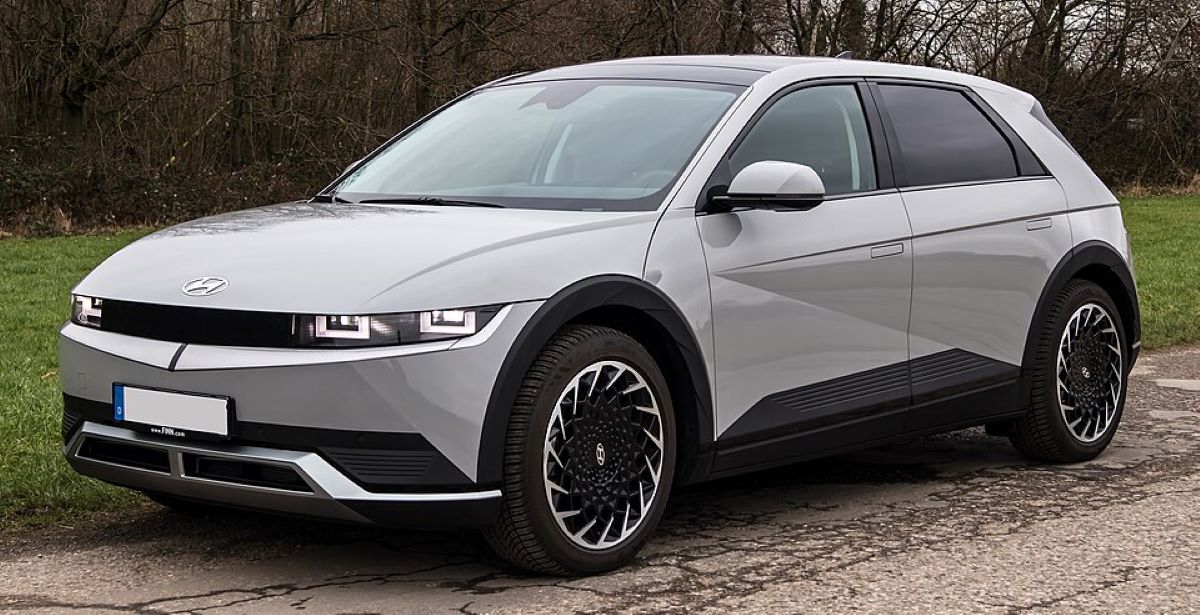
With several trims and powertrain options available, the Ioniq 5 gives buyers a variety of configurations to suit their driving needs and preferences.
Whether navigating busy city streets or tackling rural roads, this EV proves to be a versatile and reliable choice.
The Ioniq 5 has many positive attributes that make it appealing to a wide range of drivers. It provides a comfortable ride and a quiet cabin, while models equipped with dual motors offer rapid acceleration.
The interior design is also praised for being intuitive and user-friendly. However, there are a few drawbacks to consider.
Rear visibility is limited, cargo space is smaller than average for its class, and it lacks wireless connectivity for Android Auto and Apple CarPlay, which could be an inconvenience for some users.
Mercedes-Benz EQS
Average Annual Maintenance Costs: $262 Per Year
The Mercedes-Benz EQS holds the distinction of having the lowest average annual maintenance costs among all electric vehicles.
While this high-end luxury sedan comes with a significantly higher price tag compared to other models, it is remarkably inexpensive to maintain.
This combination makes the EQS a relatively affordable electric vehicle to own in the long run, especially for those who prioritize both luxury and low maintenance.
The most popular version of the EQS is equipped with a 107.8 kWh battery, producing 516 horsepower and 631 lb-ft of torque.
It features all-wheel drive and delivers a driving range of 340 miles. This sedan can accelerate from 0 to 60 mph in just 3.7 seconds and reaches a top speed of 131 mph (governor limited).
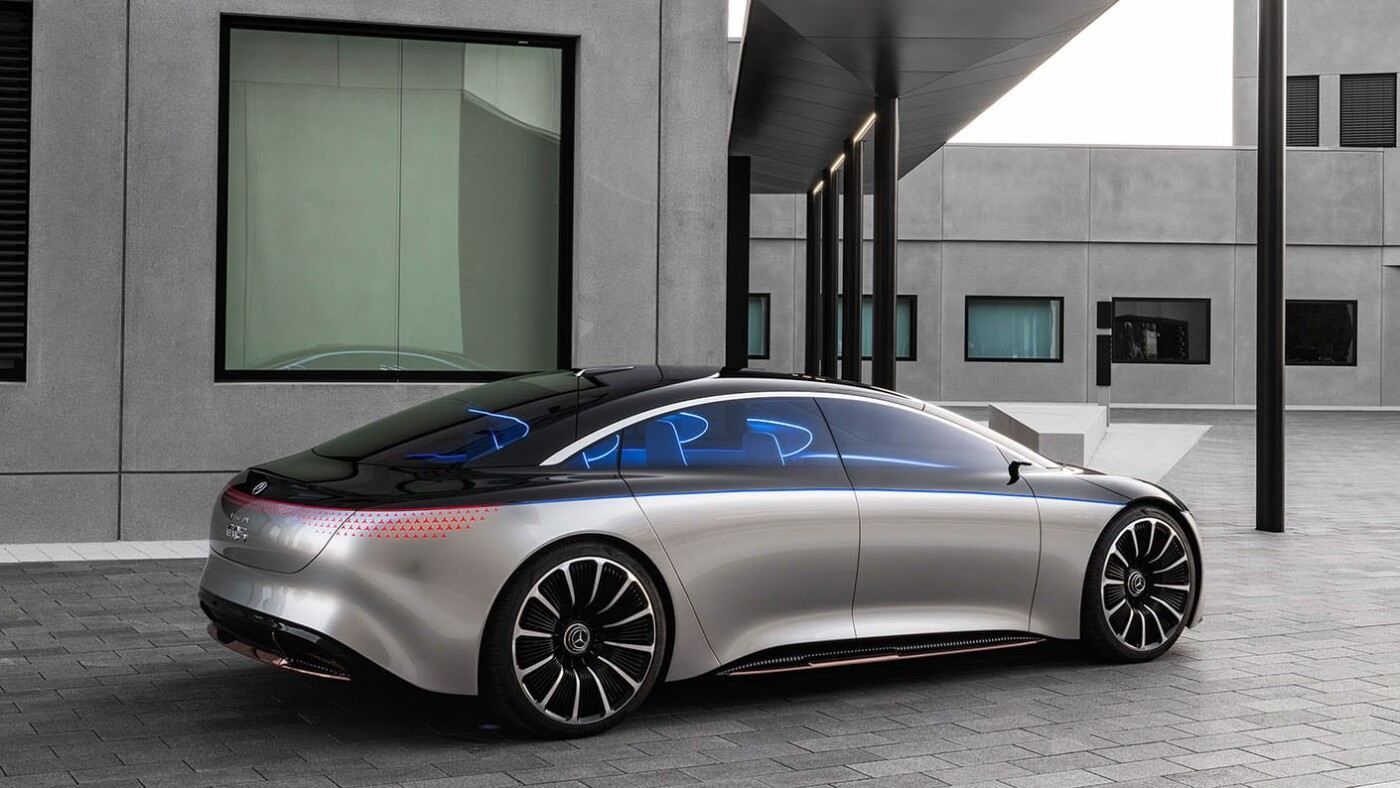
In addition to its performance capabilities, the EQS stands out for being one of the most advanced EVs on the market, particularly in terms of its digital technology.
A standout feature is the 56-inch glass-panel Hyperscreen that spans the dashboard, offering a fully digitized and futuristic driving experience.
There are numerous advantages to owning the Mercedes-Benz EQS. It provides an impressive real-world electric range, is loaded with standard features and advanced in-car technology, and offers a comfortable and luxurious interior.
However, the EQS is not without its flaws. The rear passenger space is somewhat underwhelming considering the vehicle’s overall size.
It is also more expensive than several of its competitors and lacks the sharp performance or sporty character found in some rival models. Additionally, its driving dynamics in urban environments could benefit from further refinement.
EVs With High Long-Term Costs
The EVs that come with the highest maintenance expenses tend to be from luxury brands.
Audi Q8 e-tron SUV
Average Annual Maintenance Costs: $1,200 Per Year
The Audi Q8 e-tron SUV brings with it a surprising average annual maintenance cost. While the expense is on the verge of being manageable, it still leans toward the higher side compared to other EVs.
For those who don’t mind spending a bit more on upkeep, this electric SUV could prove to be the right choice in Audi’s lineup.
The most popular version of the Q8 e-tron comes equipped with a 106.0 kWh battery that generates 402 horsepower and 490 lb-ft of torque.
It features an all-wheel-drive system, delivers a driving range of 296 miles, and accelerates from 0 to 60 mph in 5.2 seconds. The top speed is electronically limited to 124 mph.
Audi has moved well beyond the experimentation phase in the EV segment, having invested considerable time and resources into developing electric vehicles, much like Tesla.
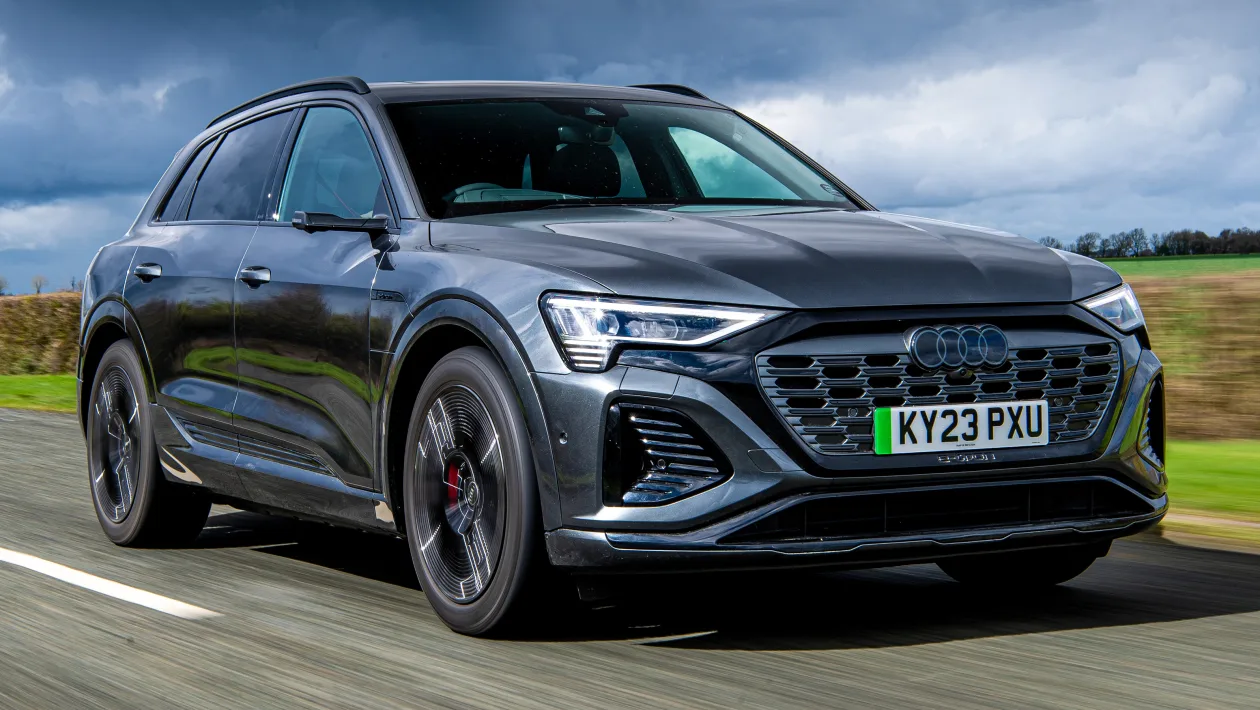
The Q8 e-tron now features a more refined design, sharper exterior elements, and enhanced driving characteristics.
Although the driving range isn’t class-leading, this can be a reasonable trade-off for those focused on style and comfort.
This electric SUV offers several key strengths, including a spacious interior, comfortable seating, and a smooth ride.
It also comes with a generous selection of standard and available safety technologies. However, there are some drawbacks.
The infotainment system can be distracting to operate while driving, and the interior design doesn’t stand out as much as some of its competitors.
Additionally, while the driving range is acceptable, it doesn’t particularly impress in a market where range is becoming increasingly important.
Volvo EX90
Average Annual Maintenance Costs: $1,200 Per Year
The Volvo EX90 is a recent addition to the electric SUV market, but it carries forward many traits from its predecessor, the XC90, which has long served as Volvo’s flagship SUV.
Built on the foundation of safety, spaciousness, and the refined elegance of Scandinavian design, the EX90 introduces modern electric power without losing the qualities that have defined the brand.
The most popular version of the EX90 features a 107.0 kWh battery, producing 510 horsepower and 671 lb-ft of torque.
It is equipped with all-wheel drive, offers a driving range of 300 miles, and can sprint from 0 to 60 mph in just 4.5 seconds.
The top speed is limited to 112 mph. The exterior design of the EX90 takes a sleeker, more modern approach compared to the XC90, but it maintains the essential elements drivers expect from Volvo.
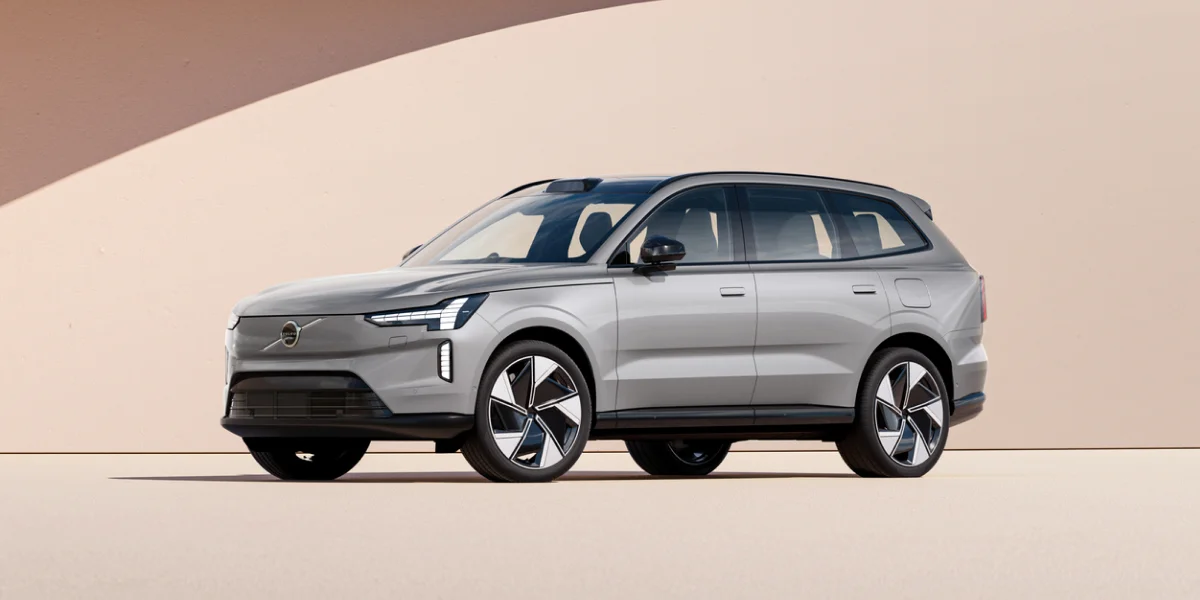
With strong performance and a generous driving range, the EX90 stands as a compelling choice for those seeking to move away from gas-powered vehicles.
The Volvo EX90 offers a range of appealing features. The ride is quiet and smooth, acceleration is brisk especially in the Performance model and the cabin is adorned with high-quality materials.
On the downside, many of the controls are housed within the central touchscreen, which may not be convenient for all drivers.
Additionally, some of the safety features that buyers might expect to be standard are only available on higher trims, and the overall driving range, while solid, could still be improved.
The first genuinely convincing premium school run car of the electric era. It’s very good, the EX90, even if the flagship version costs £100,555 before options. More affordable versions, likely starting at £75,000, will be along in mid-2025.
You could. But the EX90 moves the game on significantly—not just in terms of packaging and driving, but also technology and design.
That said, Volvo is hedging its bets against the electric backlash felt across Europe and beyond. A facelifted XC90 will be along in a few months. Just bear in mind that top-spec plug-in versions are actually £84k and the waiting list for those is already three to four months.
Although you’ll get one sooner than an EX90, that model is already sold out around eight months ahead.
The EX90 is built on an updated, electric-only version of the SPA platform that also underpins the XC90. The only other car currently using it is the Polestar 3.
This is not a Geely platform shared across Chinese SUVs or a Lotus Eletre with a Swedish makeover. Although it’s also built in China, all European and American EX90s will come from Volvo’s plant in Charleston, South Carolina.
It is the be-all and end-all of this car. And it’s clearly better thought-out and more user-friendly than any other electric family SUV on the market.
Audi’s Q8, BMW’s iX, and Mercedes’ EQE SUV are all premium SUVs still searching for a clear purpose. The EX90 understands exactly what it’s for.
Inside, it’s not much more imaginative than an XC90. But the skateboard battery (a giant 111kWh, 107kWh usable) allows for a flat floor across the second row and decent footspace in the rear row.
There’s also a huge storage well under the boot floor. All UK models will come with seven seats, though some markets can opt for captain’s chairs in the middle row.
From the outside, it’s a large car—about 100mm longer than an XC90 at 5,037mm, and similarly wider. But it doesn’t really look that big.
Part of that may be because we drove it in the U.S., but also because Volvo has nailed the same ‘reductive’ design philosophy that Range Rover made famous.
It looks like an XC90, just simpler and cleaner. Definitely a Volvo—just maybe a bit faceless at the front.
Mercedes-Benz EQB
Average Annual Maintenance Costs: $1,400 Per Year
In recent years, Mercedes-Benz has been steadily introducing electric versions of its traditional gasoline-powered vehicles.
The Mercedes-Benz EQB might not sound particularly thrilling when it comes to performance figures, but this compact and versatile SUV could be an excellent fit for those who primarily navigate city streets.
The EQB comes with a 66.5 kWh battery that produces 288 horsepower and 384 lb-ft of torque. It features an all-wheel-drive system, delivers a driving range of 227 miles, and accelerates from 0 to 60 mph in 5.4 seconds.
The top speed is limited to 100 mph. While the EQB doesn’t go out of its way to stand apart from the crowd, it succeeds in offering the ideal size and functionality for everyday driving.
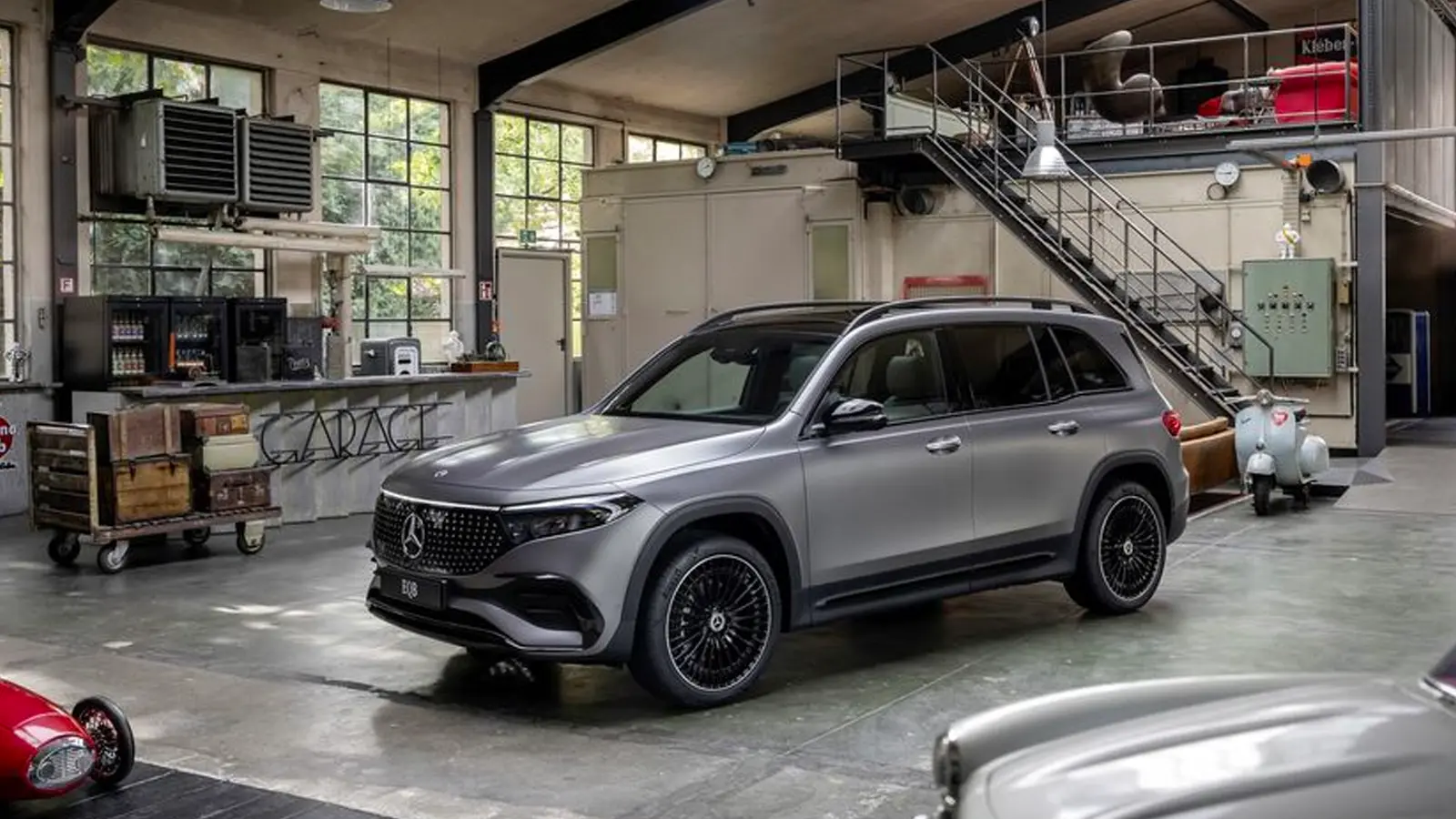
This electric SUV integrates Mercedes-Benz technology and premium materials into a package that both looks and feels right on the road.
Among its highlights are a boxy design that maximizes interior space, a quiet and serene cabin, and an intuitive infotainment system.
On the downside, the driving range leaves something to be desired, and many features that buyers might expect as standard equipment are only available on higher trims.
Additionally, the brake pedal can be overly sensitive, making smooth stops more difficult than they should be.
Jaguar I-Pace
Average Annual Maintenance Costs: $1,500 Per Year
If you’re looking for an electric SUV that breaks away from the mainstream, the Jaguar I-Pace might be the ideal option.
While it’s one of the most expensive EVs in terms of annual maintenance, the sleek styling and refined driving experience could make it worth the cost for some buyers.
The I-Pace features a 90.0 kWh battery that delivers 394 horsepower and 512 lb-ft of torque. It includes an all-wheel-drive setup, offers a driving range of 234 miles, and achieves 0 to 60 mph in just 4.3 seconds.
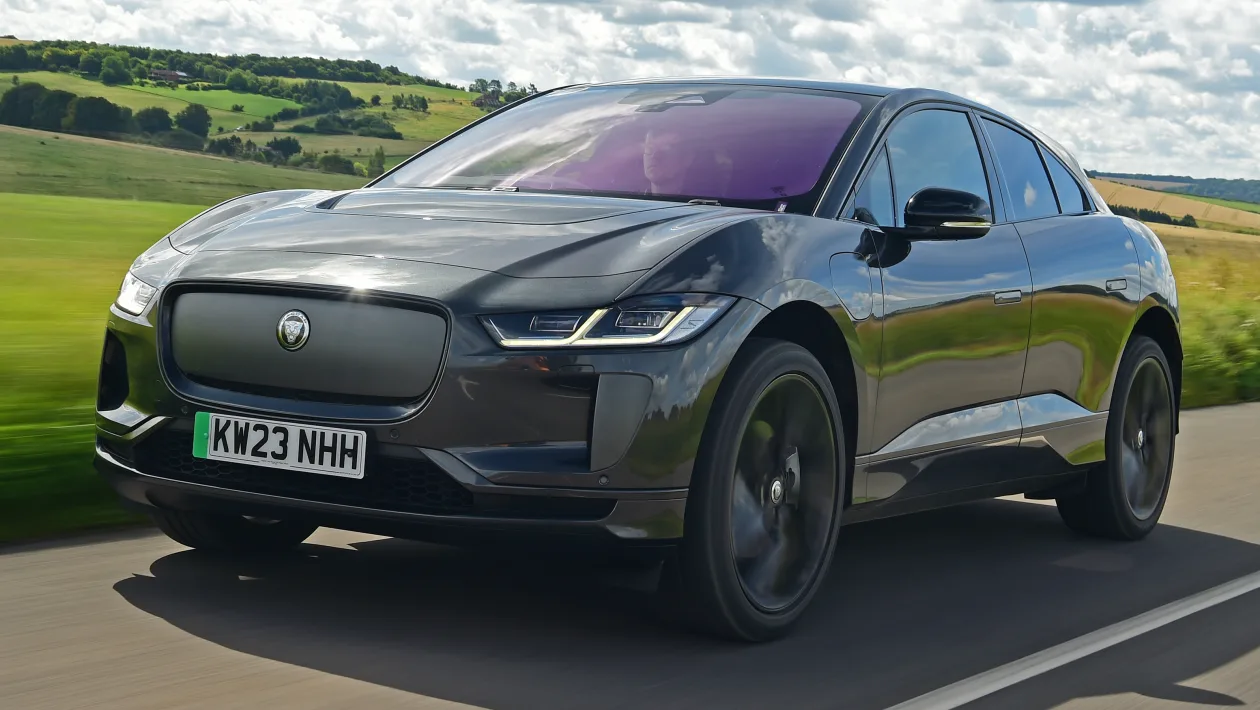
Its top speed is limited to 128 mph. At the core of the I-Pace is a bold exterior design, a sophisticated interior, and a dynamic driving character that brings the flair and refinement people expect from Jaguar.
In many neighborhoods, you won’t find another Jaguar SUV on the road, making this a standout choice for those who like to drive something different.
Key strengths of the I-Pace include quick and responsive acceleration, enjoyable steering and handling, and a smooth overall ride quality.
However, its range is modest compared to competitors, and the climate control system could use more power to perform efficiently. Also, the I-Pace lacks a full one-pedal driving mode, which some EV drivers may miss.
Jaguar has always taken a reserved approach to updating its vehicles. Yet it was an early mover in the EV space with the I-Pace, which debuted in late 2018—well before the Audi Q8 e-tron appeared as the first luxury EV from a legacy automaker.
Now entering its fifth model year, the 2024 I-Pace receives minimal updates. Meanwhile, newer competitors offer longer range, faster charging, better technology, or higher performance.
Still, the I-Pace remains compelling. It appeals more to emotion than logic. Its unique exterior, refined cabin, and engaging driving dynamics give it a rare sense of character in a segment that often prioritizes digital features over soul.
Luxury features such as the Meridian sound system, a crisp 10-inch infotainment screen, performance seats, and eye-catching cross-stitched leather enhance its appeal. While it may not top 2024 rankings, the I-Pace continues to be a lively and satisfying electric SUV.
As Jaguar prepares a completely new electric lineup for 2025, only small updates have been made to the 2024 I-Pace. The grille’s former lozenge pattern has been replaced by a solid dark-gray panel. The front intakes and lower bumper have been reworked for a more aggressive appearance.
A Black Exterior Pack is now standard, adding dark accents to the side mirror caps and window trim. Two new satin paint options—Eiger Grey and Carpathian Grey—have been added, each priced at $7,450.
Inside, the updates include a standard heated steering wheel and an ebony suede cloth headliner, adding comfort and class to the interior
The 2024 Jaguar I-Pace starts at $73,375. There is only one trim level, but it includes nearly everything—features that many luxury brands typically charge extra for.
Standard equipment includes a 10-inch infotainment screen with navigation, adaptive cruise control, lane-keeping assist, a premium sound system, 16-way heated and cooled power front seats, a power liftgate, air suspension, and 20-inch wheels.
The only extras we’d recommend are the performance seats, which are available at no additional cost, and the $215 sunshade for the panoramic roof—a smart climate feature that doesn’t draw power from the main battery.
The I-Pace is powered by two electric motors producing a combined 394 horsepower and 512 pound-feet of torque. These motors drive all four wheels and deliver strong, effortless acceleration.
The I-Pace we tested reached “60 mph in 4.3 seconds”, beating a similarly powerful Jaguar F-Pace with a 395-hp 3.0-liter inline-six by more than a second.
Jaguar ensured its only EV retained the brand’s driving appeal. The only noticeable downside was uneven braking at low speeds, which we noticed during testing. Otherwise, it’s a well-balanced and enjoyable drive.
The 2024 I-Pace uses a 90.0-kWh battery that offers up to 246 miles of EPA-estimated range on 20-inch wheels. Opting for 22-inch wheels reduces the range to 217 miles.
In comparison, the updated Audi Q8 e-tron now delivers up to 285 miles of range, while the “Tesla Model X” can reach an estimated 348 miles.
The I-Pace includes a standard DC fast-charging port, capable of charging the battery to 80 percent in about 40 minutes—not especially quick by today’s standards. Using a 240-volt AC outlet, a full charge takes just over ten hours.
This is slightly worse than earlier I-Pace models, which had an 11.0-kilowatt onboard charger. The current version comes with a downgraded 9.6-kW charger, resulting in longer home charging times.
BMW iX
Average Annual Maintenance Costs: $1,600 Per Year
The BMW iX stands as a bold entry in the electric SUV segment, offering plenty of luxury and performance but also the highest annual maintenance costs among EVs.
Comparable in size to the BMW X5, this midsize SUV delivers generous cabin space along with powerful electric performance, making it a strong contender if you’re shopping for a high-end electric SUV.
The iX is powered by a 105.2 kWh battery that produces 516 horsepower and 564 lb-ft of torque.
It utilizes an all-wheel-drive layout, offers a driving range of 274 miles, and rockets from 0 to 60 mph in just 3.2 seconds. Its top speed is governed at 154 mph.
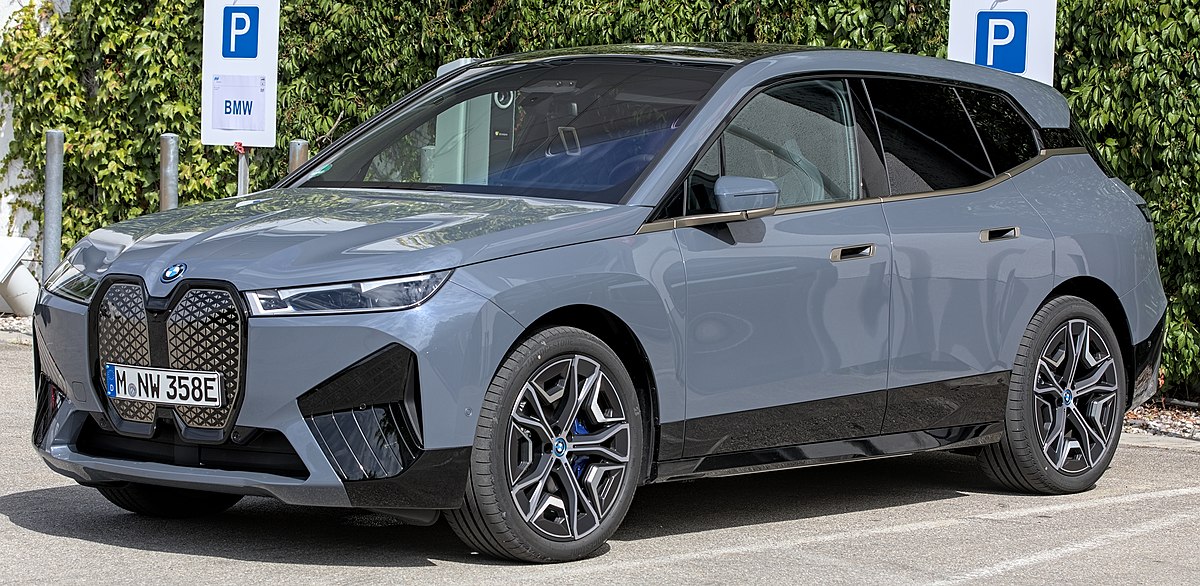
What sets the iX apart is its driving precision and power, characteristics that BMW is known for.
Combined with the instant torque and smoothness of an electric powertrain, the iX delivers a special kind of driving experience.
The interior is both roomy and comfortable, offering a blend of luxury and cutting-edge tech.
Acceleration is impressive, and the SUV comes loaded with an extensive range of driver assistance features and premium amenities.
Still, there are some areas for improvement. Certain on-screen controls are difficult to navigate or access, the iX lacks an optional third-row seat, and there’s no entry-level trim to make the vehicle more accessible in terms of price.

